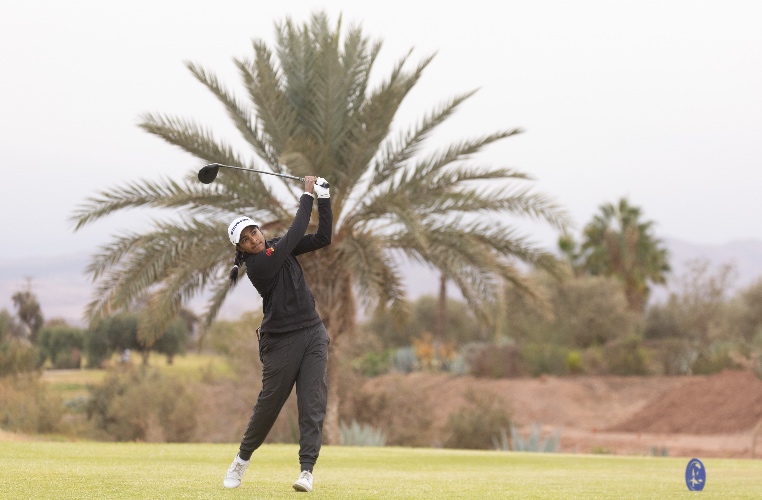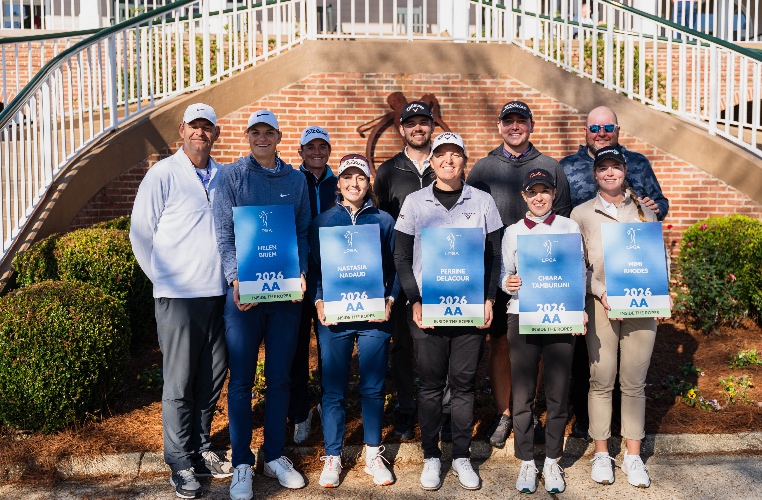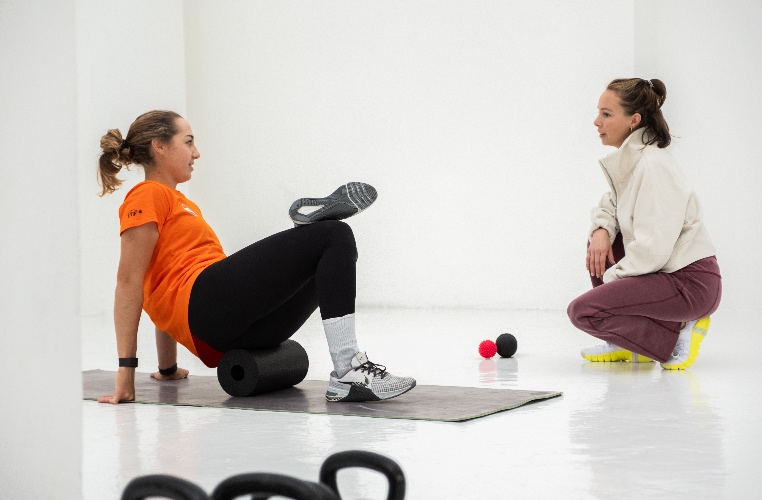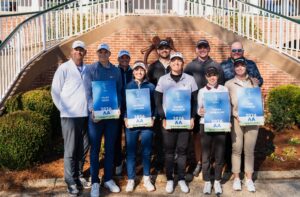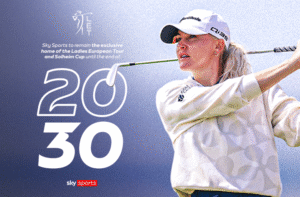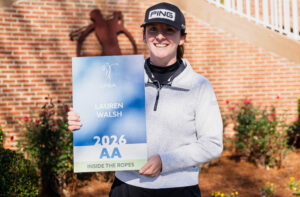In this article, we explore how prioritising recovery and strategic programming benefits France’s Nastasia Nadaud, one of the rising stars on the Ladies European Tour (LET)…
Picture yourself as a professional golfer, going from tournament to tournament across the globe, continually pushing your body and game to its limits. Now add to the mix the unrelenting pressure to perform at your peak, day in and day out. It’s a demanding feat that few truly understand – the constant battle against fatigue, muscle strain, and the looming threat of injury. Welcome to professional golf, where every shot is a test of skill, endurance, and resilience.
Golf fitness training to combat and attain those highly specific demands of professional golf has been integrated by most players. Yet, rest and recovery are not only obstacles for many but, are additionally still defined as a weakness.
My name is Liesbeth Pauwels, golf performance coach, and my go-to pace used to be the speed of light. It’s been about a decade that I’ve been practicing to slow down. My body clearly couldn’t keep up with the relentless pace that didn’t include any form of recovery. Initially, the transition was challenging, with my mind often racing with thoughts of guilt and shame whenever I took a moment to rest. However, as I continued practicing and studying the topic at hand, I discovered a newfound sense of balance and strength.
Today, I help others, including athletes like Nadaud, to incorporate recovery tools into their lives on tour, recognising that sustainable excellence comes from embracing all aspects of training.
Precision
Most of the athletes I have worked with try to do too much, they never want to leave the training field, and I have to slow them down. To address this, I teach and emphasise basic sports physiology principles. While we still approach training with intensity and individualisation, we’ve added a crucial element of precision. This delicate balance between rigorous golf fitness training and adequate recovery has had a profound impact on Nastasia’s performance on tour. She now experiences higher and more stble energy levels. She feels motivated to train again, and that was very important to us.
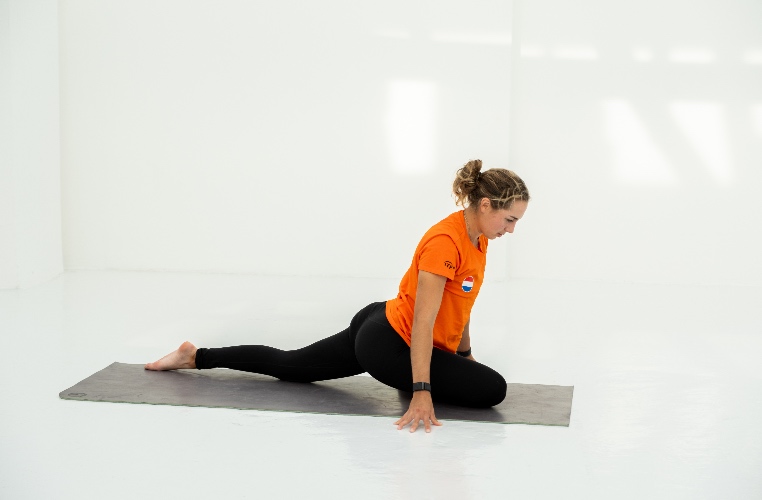
Athletes who overtrain with excessive volumes don’t achieve any progress and risk depleting their joy for the pursuit. Her cardio sessions focus on fast short runs rather than long slow runs. We work on developing the deep small core muscles and use mobility techniques like TPI and diaphragmatic breathing. Her reaction to how her posture immediately felt much more upright and stable didn’t surprise me at all. This quick change is already positively impacting her swing sequence and positioning.
Our goal was to ensure that her body remained in an optimal state, enabling the muscular system to effectively strengthen, the joints to maintain suppleness, the fascia to become free of adhesions, and the nervous system to facilitate healing and recovery. In her game, we’re seeing it result in less dispersion and greater yardage consistency.
Menstrual Cycle
It’s exciting to observe how Nastasia is achieving her goals faster, despite engaging in fewer overall exercises. To maintain that progress, her adjusted training plans account for the changes in the menstrual cycle. Through it, she is learning to work with her body, rather than against it. Other determining indicators such as the TPI screen, heart rate variability, and sleep patterns are also monitored, with the latter two being tracked by a biometric device (Whoop watch) that she wears. She regularly sends voice messages to update how she’s feeling at the moment. This allows her to have full focus on golf while benefiting from my direct monitoring, ensuring that we leave no stone unturned.
Recovery Methods
We have been incorporating a diverse set of proactive recovery techniques that are helping her move and feel better. We’re working towards the culmination of hundreds of details executed precisely. We’re in the game of collecting as many “one percents” as we can find. And we’ve found that foremost, they need to be easy to integrate. For example, Nastasia travels wearing her compression socks and drinks water with electrolytes. That helps improve her circulation, prevents dehydration, and alleviates muscle tension from flights and rounds.
We also talk about the influence of self-talk since the body listens to everything the mind says. I’ve observed how transformative it can be to let athletes share their concerns, like the intensity of jet lag they experience. And…with the right tools implemented strategically, it’s helping driven athletes like Nadaud remember:
“Yes the effects of playing professionally are real and it is a big deal, however now there’s been solid preparation and you have tools in your toolkit to support it, your body is allowed to feel like this, and your body is also very capable of handling this effectively and smoothly.”
During tournament weeks we have prioritised movement recovery methods at the end of each round. This cools off her ‘jets’. She loves the effects of yoga and has experienced benefits from poses that focus on neutralising and elongating the spine, opening the front of the hips, deep glute stretches, and releasing tension in the upper back and shoulders. She consistently has this same cooldown routine which finishes with breathwork.
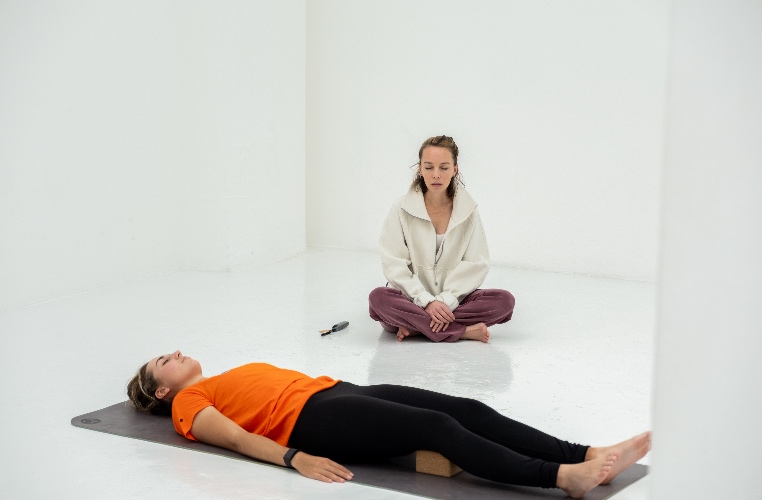
Tournament golf can be an emotional minefield, and having a routine that she has control over provides her with a sense of safety amidst the chaos, empowering her to navigate the challenges with composure, renewed energy, and determination.
“After our sessions, I feel like a whole new person,” Nadaud says. “Even though the workouts are challenging, afterward, my body isn’t in overdrive anymore and my mind feels calmer. It helps me ground myself and unwind from the adrenaline rush. This year, I am experiencing how my training is more about me as a person, not just a golfer, and it’s made a big difference in how I’m feeling and the way I’m playing.”
Cooling Down
The way Nastasia and I are working is a holistic approach. This isn’t at all about sacrificing speed or compromising on power. Quite the opposite. It’s about helping athletes learn to move to their fullest athletic capacity and supporting their nervous system for enhanced, more efficient recovery. By doing so, the body adapts faster and becomes incredibly resilient. They are leveraging the quality and consistency in their game. The level of focus intensifies yet it’s way less forced. The brute competitiveness now rests upon a foundation that withstands the test of time.
So how to take action yourself as a golfer? Commit to a cooldown. It’s designed to help bring your body back to a normal pace and limit any soreness you’ll have later.
Start with a couple of stretches. While doing so, remember your breath and make each exhale longer and slower. Listen to a calming playlist. This simple routine has so much potential, and it is easy to adhere to. The cooling down gradually lowers heart rate, eases muscle tension, and restores balance to the nervous system. A recent study (Balban et al., 2023, Cell Reports Medicine) concluded that controlled breathwork resulted in a reduction of negative emotions and reduced physiological arousal.
Research also consistently demonstrates that prioritising rest and recovery techniques significantly enhances athletic performance and reduces injury rates among athletes.

Take a moment to reflect: What are your recovery habits and beliefs? Can you imagine a life that allows for frequent recharging? In which areas could you transition to work smarter, not harder? And what would that look like? When you observe competitors who never seem to take a day off, what would support you?
As Nastasia’s golf performance coach, I’ve witnessed once again how taking time off and incorporating restorative practices, such as yoga and breathwork, enhance an athlete’s road to the top of the LET, and beyond. I’m confident that those who learn to embrace rest and recovery will discover their full potential. And sometimes, the hardest thing to do…is to do less.
Liesbeth Pauwels (@lp.golf.performance) is a golf movement expert and Europe’s leading golf performance coach. With nearly 15 years of experience in golf performance, she is committed to enhancing players’ results and athletes’ well-being. For more information, visit www.lpgolfperformance.nl.
